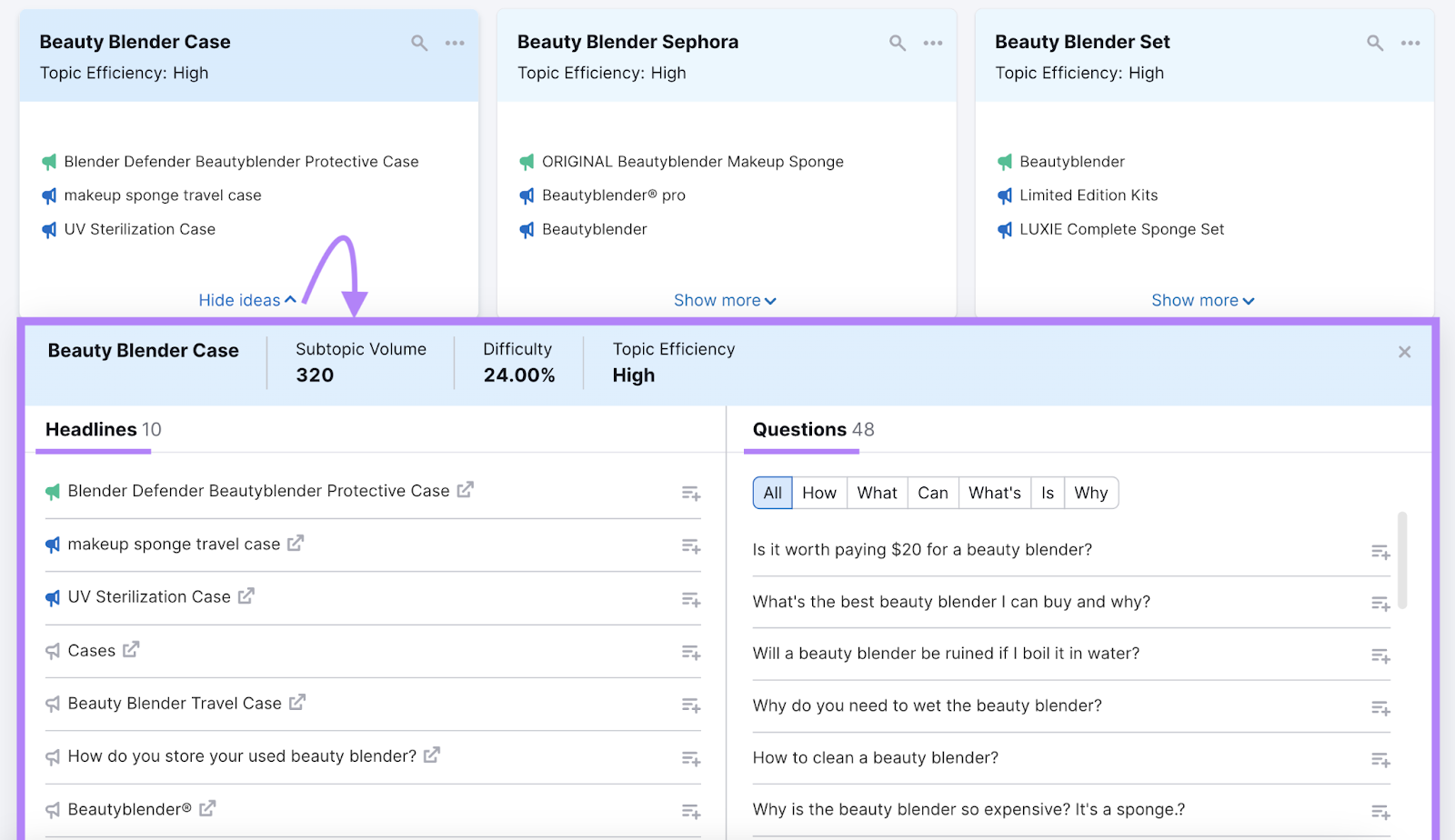Using different types of content marketing allows you to cater to your audience’s various needs, preferences, and habits.
That means you can reach more people more often. And ultimately get more business.
Here are 17 content formats to consider:
1. Blog Posts
Blog posts are still one of the most effective ways to connect with your target audience.
They can provide valuable information, build brand awareness, and improve search engine rankings. And help solve problems for your target audience. Which fosters trust and loyalty.
This trust and loyalty can easily translate to business growth.
In fact, 55% of content marketers report that short-form articles or long-form blog posts are among the top performers of all content types, according to Semrush’s State of Content Marketing 2023 report.
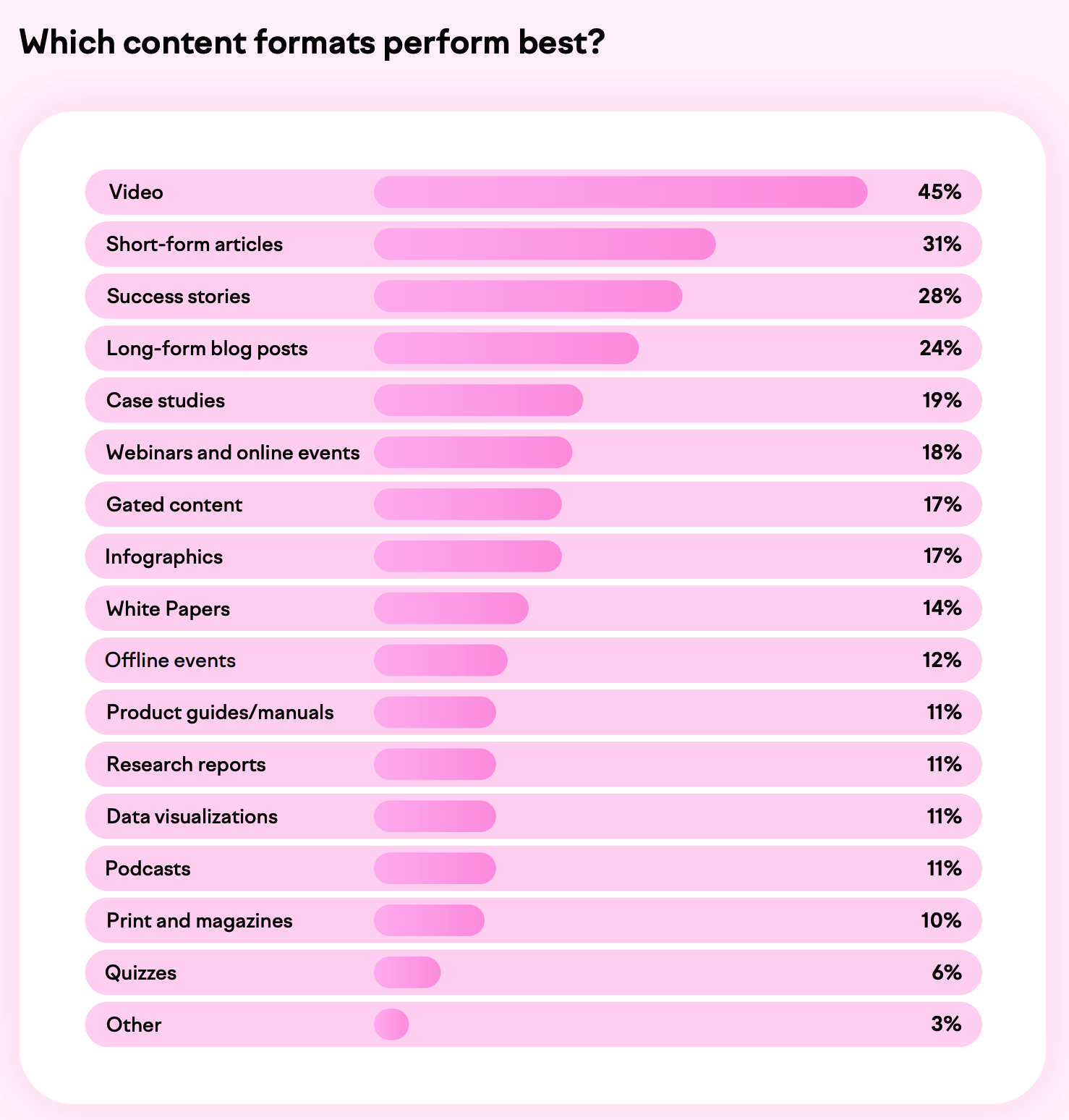
One of the best ways to come up with blog ideas is to see what your audience searches for.
Try it now by entering a topic and target country into Semrush’s Topic Research tool:
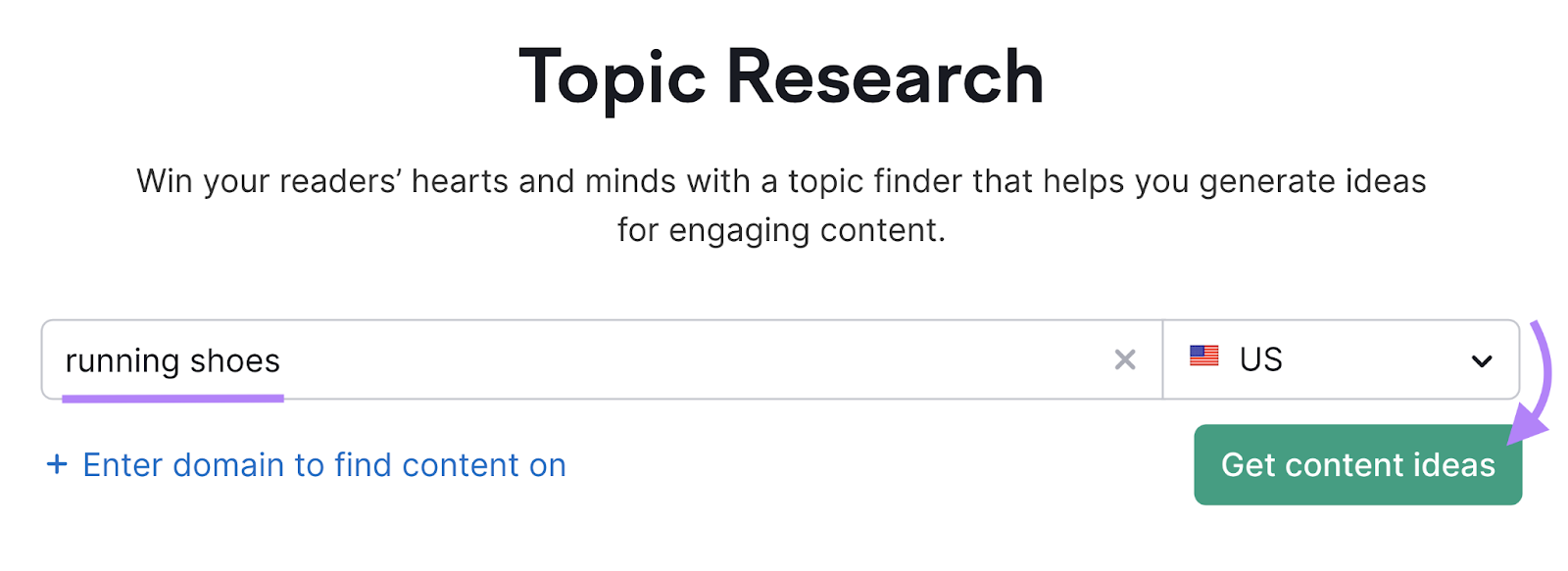
The tool will provide a list of popular and trending subtopics.
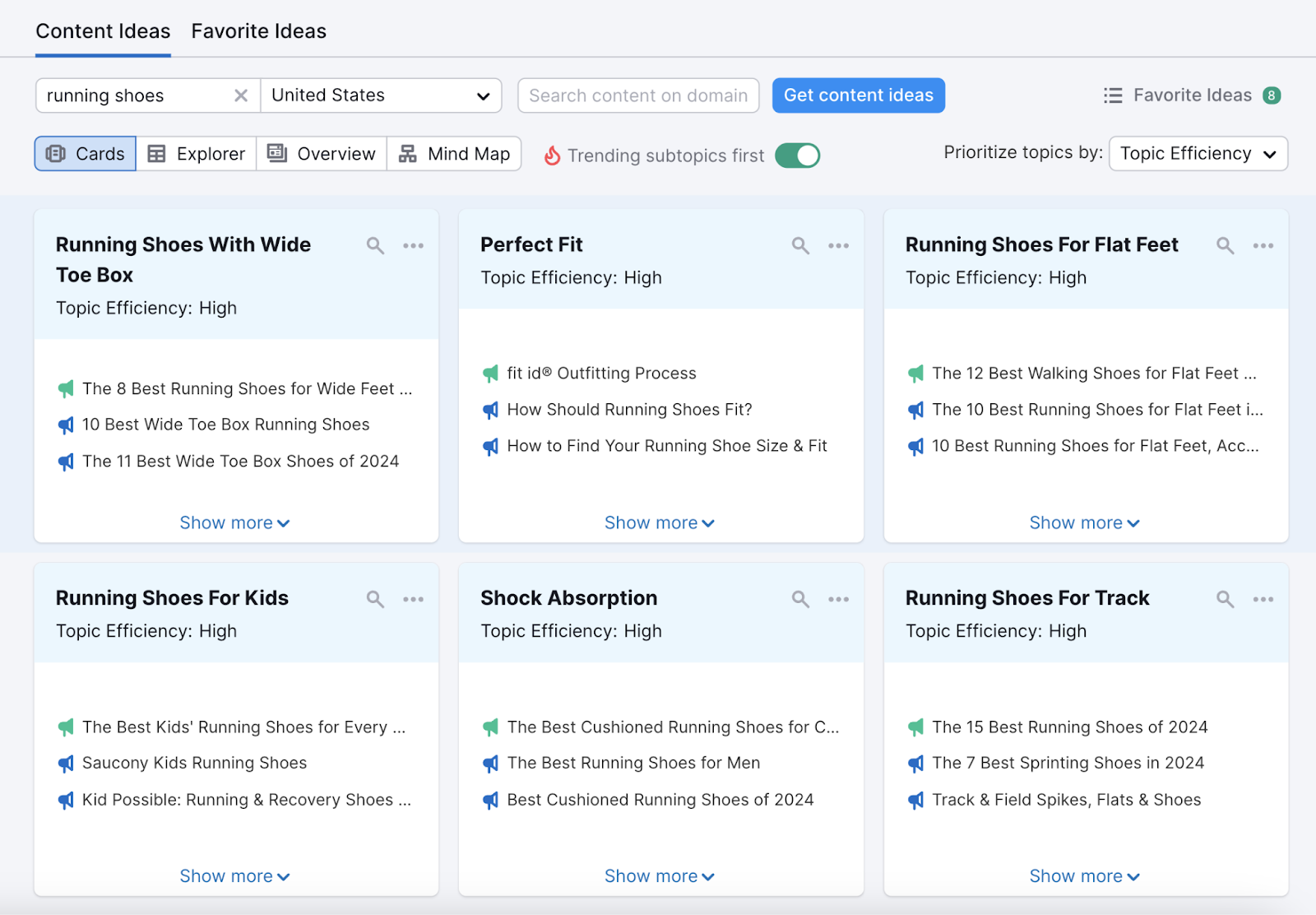
Click “Show more” on any idea to see:
- Subtopic volume: The average number of monthly Google searches for the subtopic’s keyword
- Difficulty: Measures how hard it’ll be to get a high Google ranking on a scale of 100
- Topic Efficiency: A measure of volume relative to difficulty—the higher the efficiency, the better
- Headlines: Popular article headlines related to the subtopic
- Questions: Some of the most-searched questions related to the subtopic
- Related searches: Related searches that show up in Google, if applicable
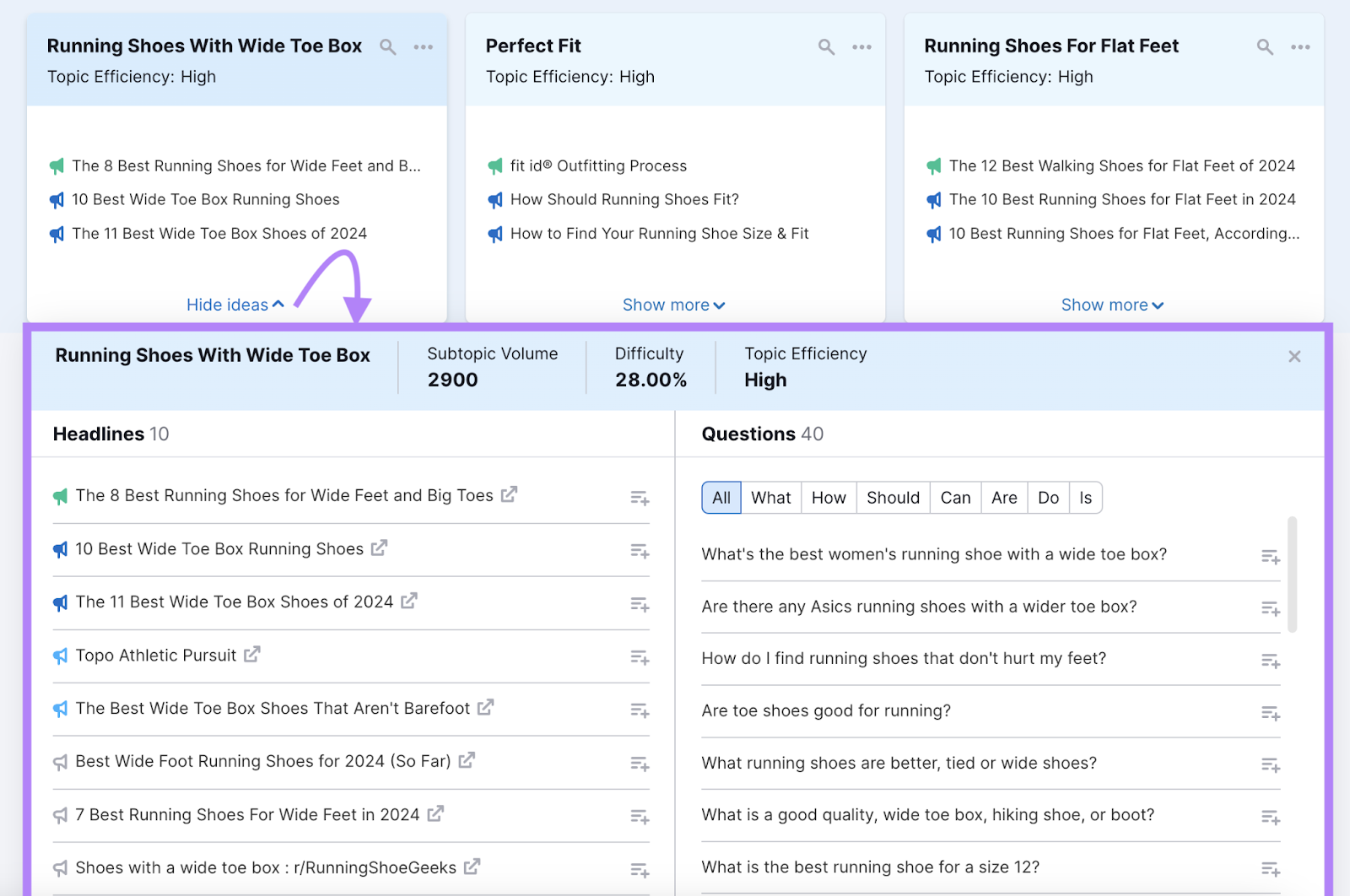
Identify what the user is looking for (known as search intent), and write to satisfy that goal.
This is what drives value—for search engine optimization (SEO) and for your business.
2. Infographics
Infographics are a type of content that presents information in a simplified, visually appealing format with minimal text.
Infographics can capture audience attention and facilitate user understanding with the aid of graphics, charts, and simplified definitions. And cater to different audiences and learning styles.
Like this example, which breaks down how to create an SEO roadmap.
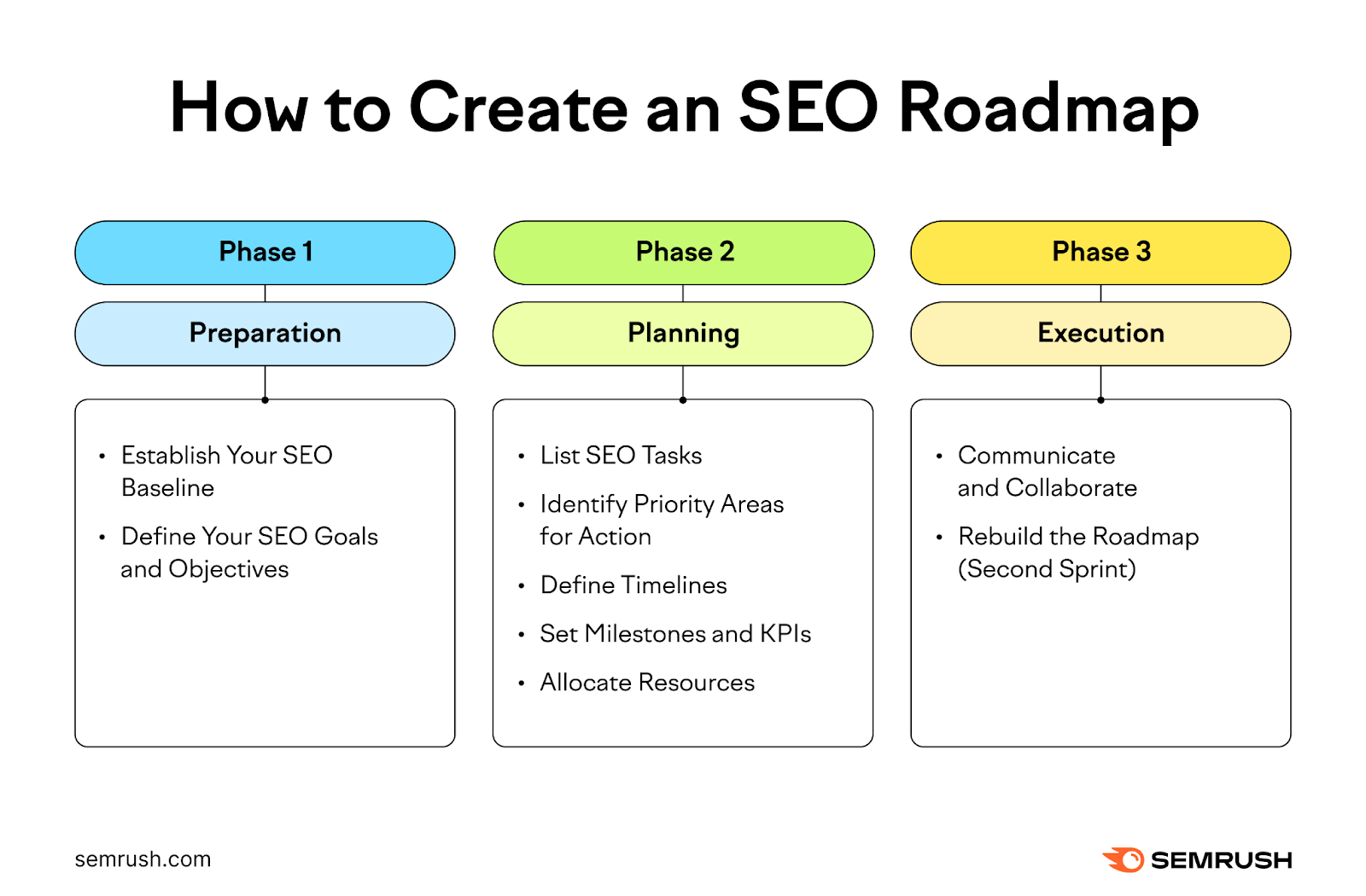
Infographics are also shareable. So, make sure to post yours on social media.
Like this:
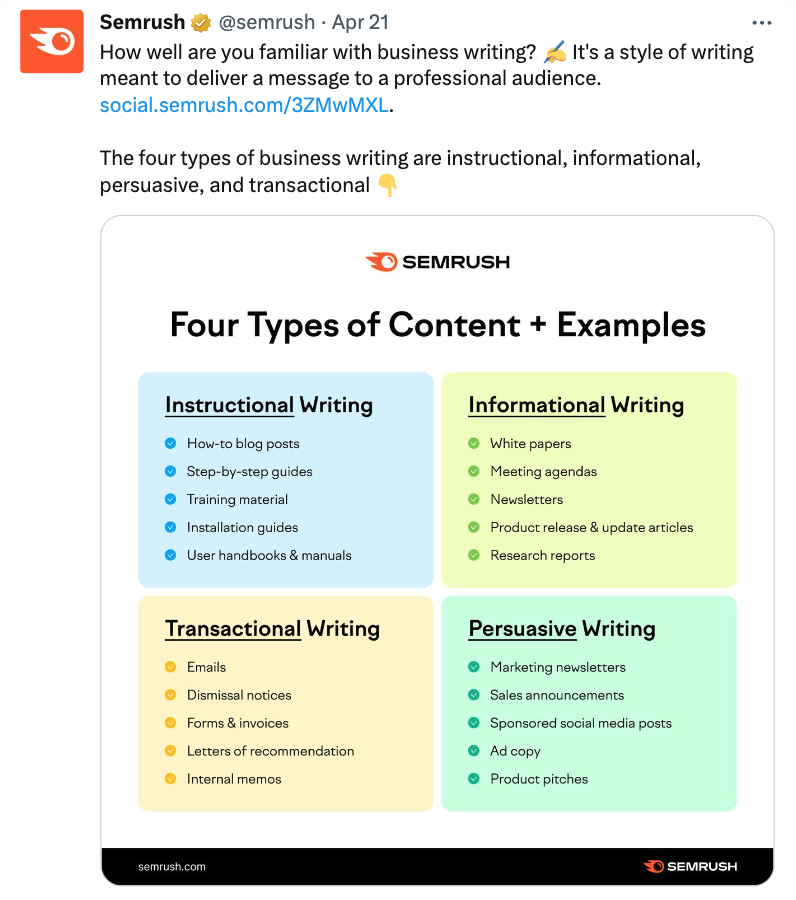
3. Videos
Video marketing can engage users through dynamic storytelling, audio, and visuals.
In some niches like home cooking, sports, and traveling, videos are integral. Because static images and copy struggle to convey the same concepts in an engaging way.
But videos can work for all business types. Because they effectively demonstrate how to do something or how something works.
You can find out what kinds of videos your audience wants to watch by conducting YouTube keyword research.
And don’t forget to create relevant and informative captions and text introductions to help humans (and search engines) better understand your content.
There are lots of other video SEO techniques you can use, too. Like optimizing your descriptions and using eye-catching thumbnails (like the ones below).
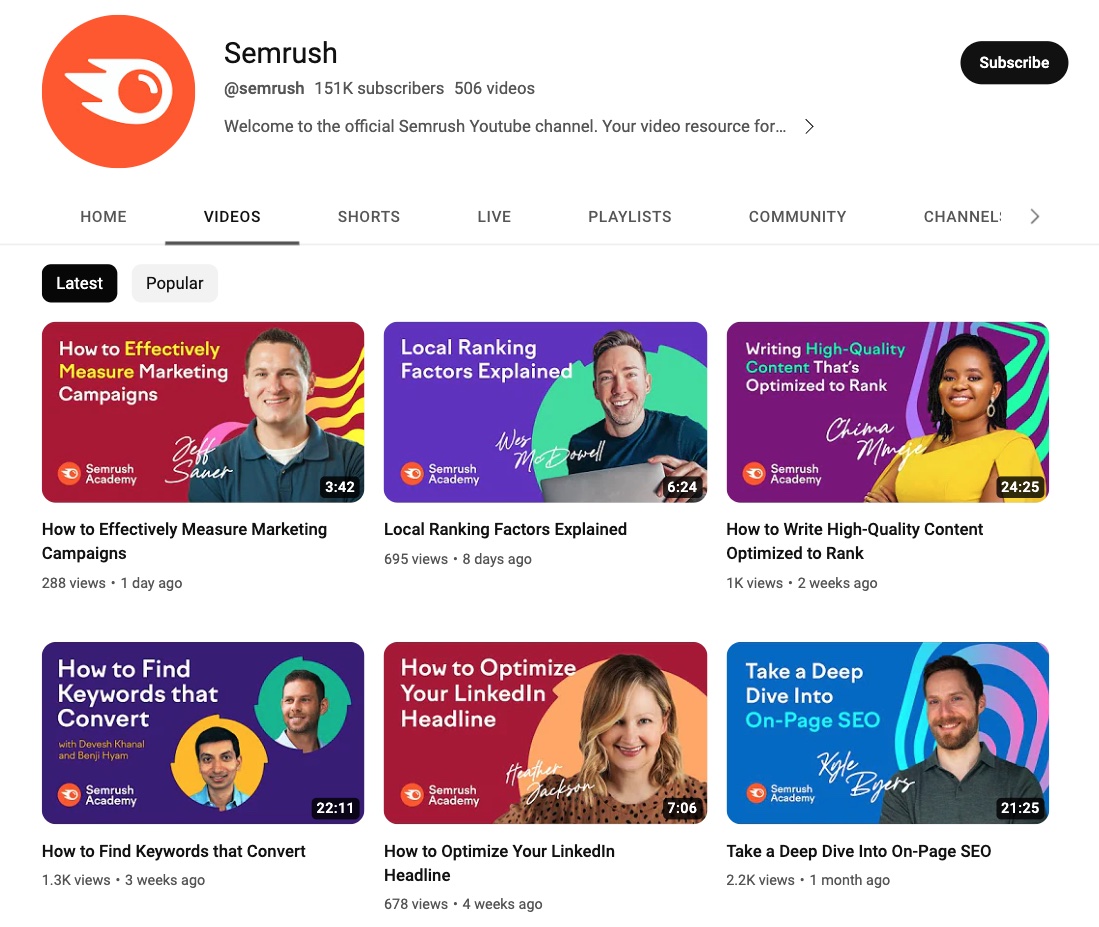
Video can be one of the most expensive and time-consuming forms of content to produce. But there are lots of video marketing apps that can make things easier.
4. Podcasts
Podcasts are a type of content for marketing that provides easily accessible audio content to on-the-go audiences. And can demonstrate empathy, expertise, and authenticity that resonates with listeners.
You can use your podcast to bring brand awareness to difficult-to-penetrate audiences and markets. And as a way to showcase your brand’s personality.
Once you have the right equipment, producing podcasts can be simple.
And if you distribute them through a podcast network like the one pictured below, they can have massive reach. Especially when you apply podcast SEO best practices.
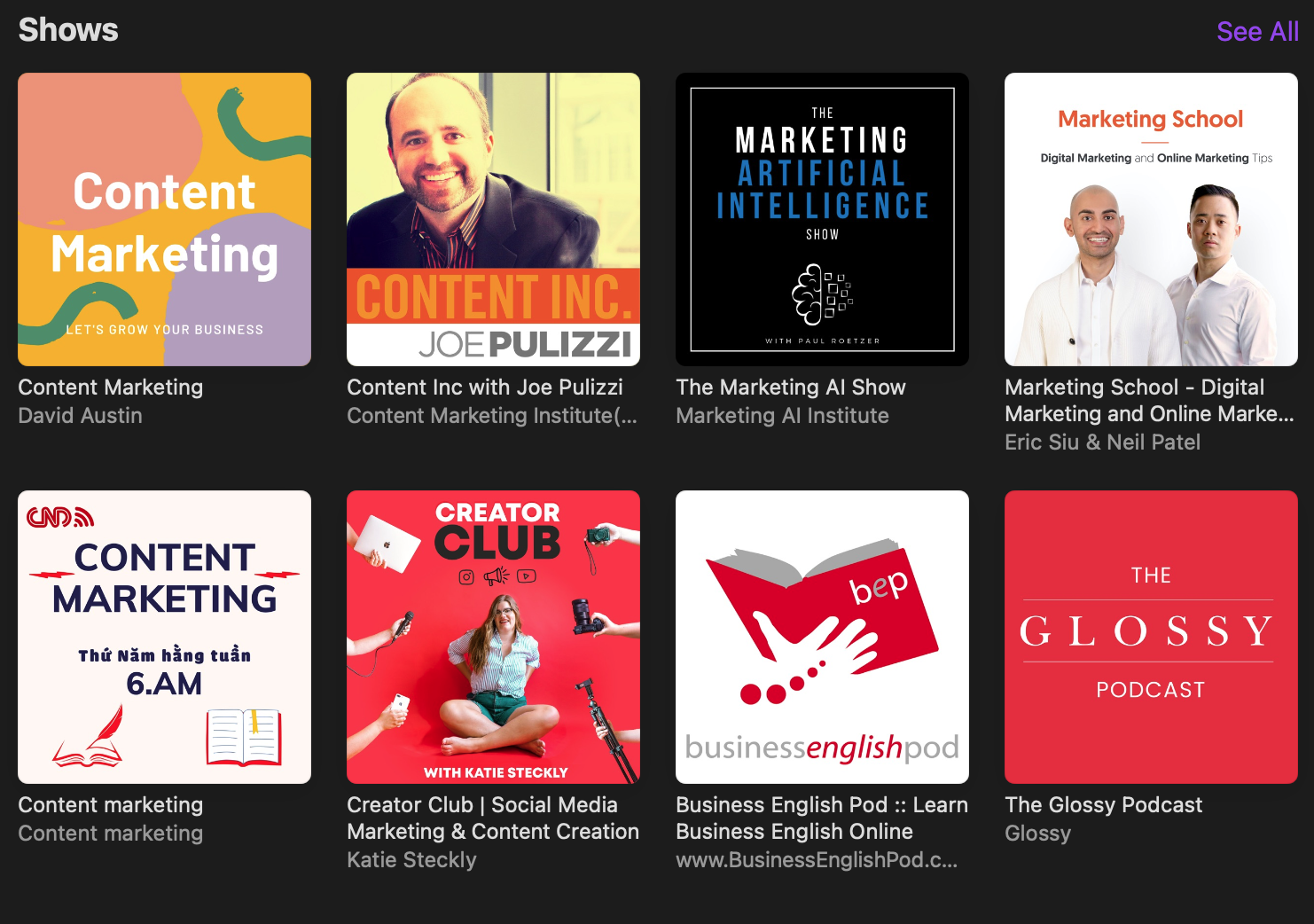
Even if you’re using a podcast network, you can still incorporate your podcast episodes into your website and social media efforts.
This allows you to both reach the podcast-listening demographic and those who typically consume more traditional forms of digital marketing.
And you can repurpose written content into podcast material (and vice versa). Which is true for many of the other content marketing types in this list.
5. Social Media Content
Social media content is short-form content that can include text, audio, imagery, video, or a combination. And enables direct interaction and engagement with a wide audience.
It also allows for both original content creation and promotion for the content you’ve already distributed on other channels.
For example, this social post promotes one of our blog posts:
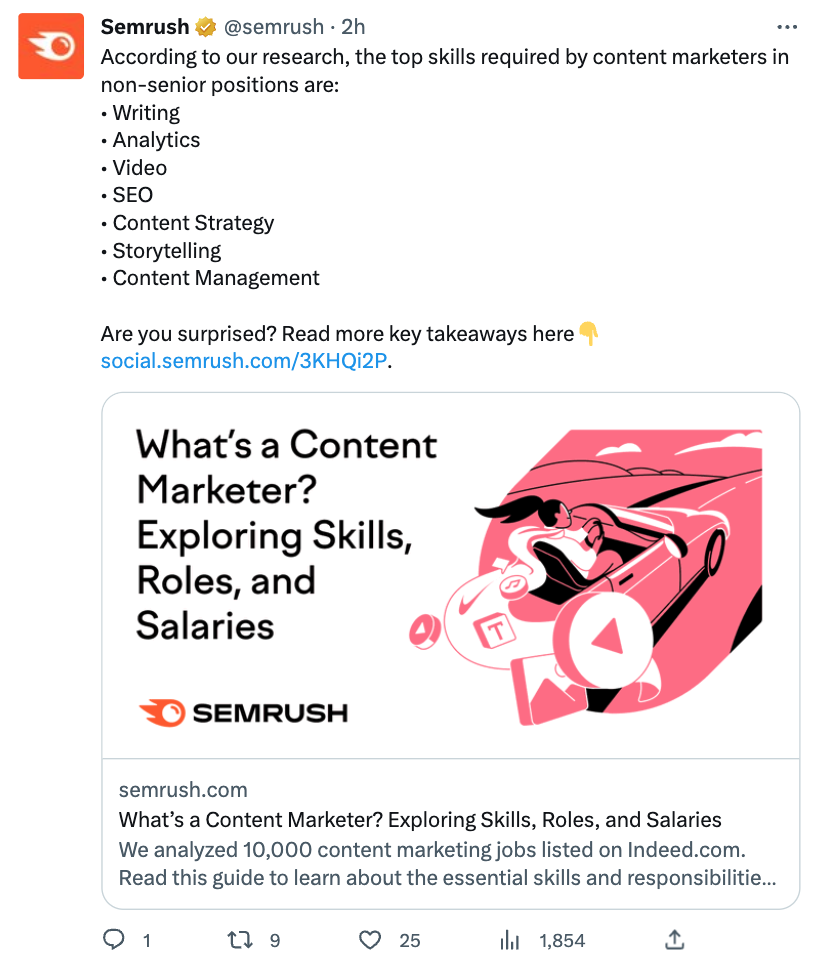
Because it allows you to post new content, promote what you already have, and interact with users, social media is a must-have for any content marketing strategy.
But it can take some effort to find the types of content and platforms that resonate with your audience.
So, monitor your social media analytics to determine whether your audience prefers videos, blog post promotions, serious posts from your CEO, or funny memes.
With Semrush Social, you can easily track analytics across your social platforms.
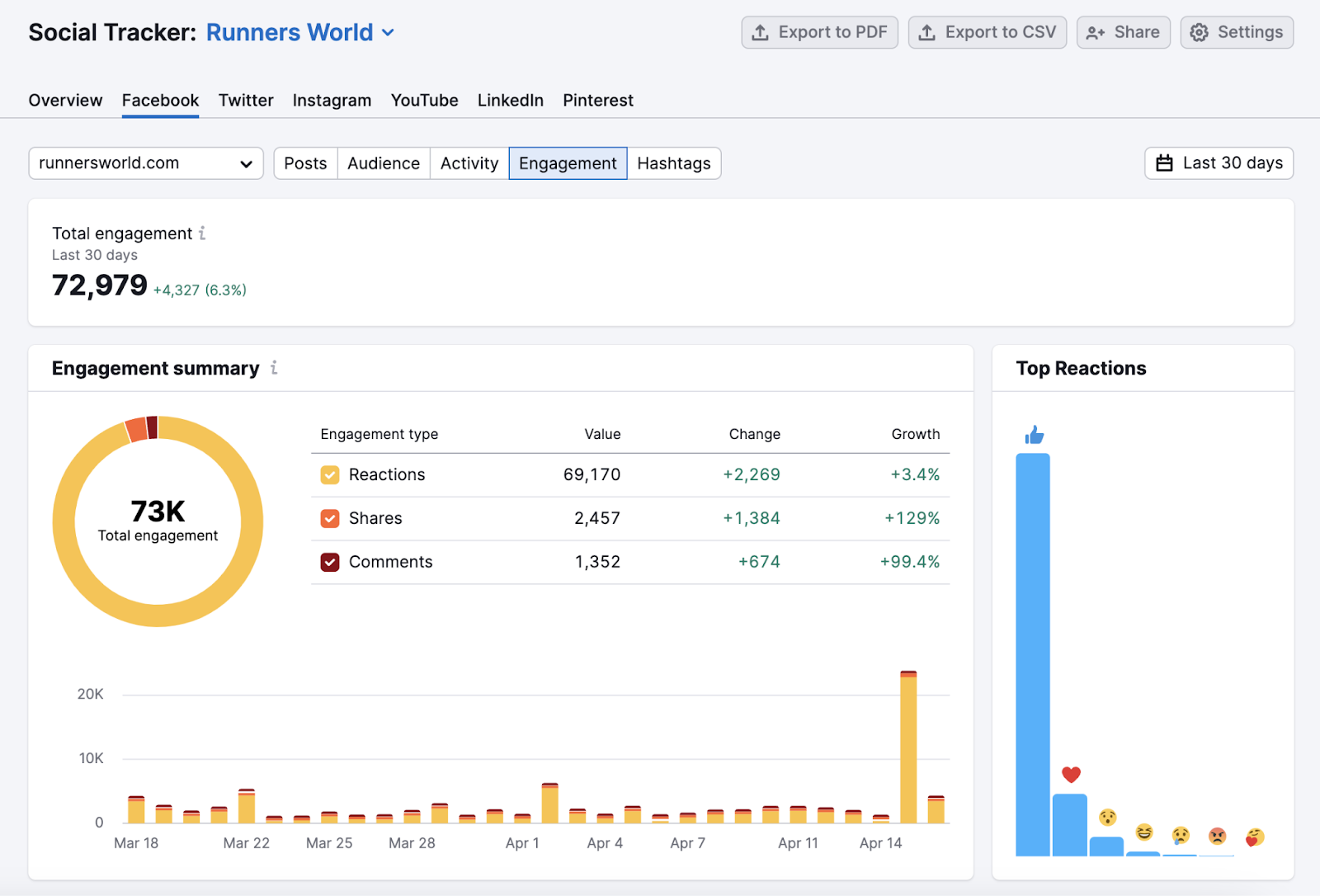
The app also allows you to schedule posts in bulk, monitor your competitors, and much more.
6. Ebooks
Ebooks are typically PDF documents that present in-depth information in a visually appealing way.
They’re one of the most common types of gated content—i.e., users must exchange their personal information to access the content.
For example, here’s the lead generation form for Semrush’s content marketing workbook:
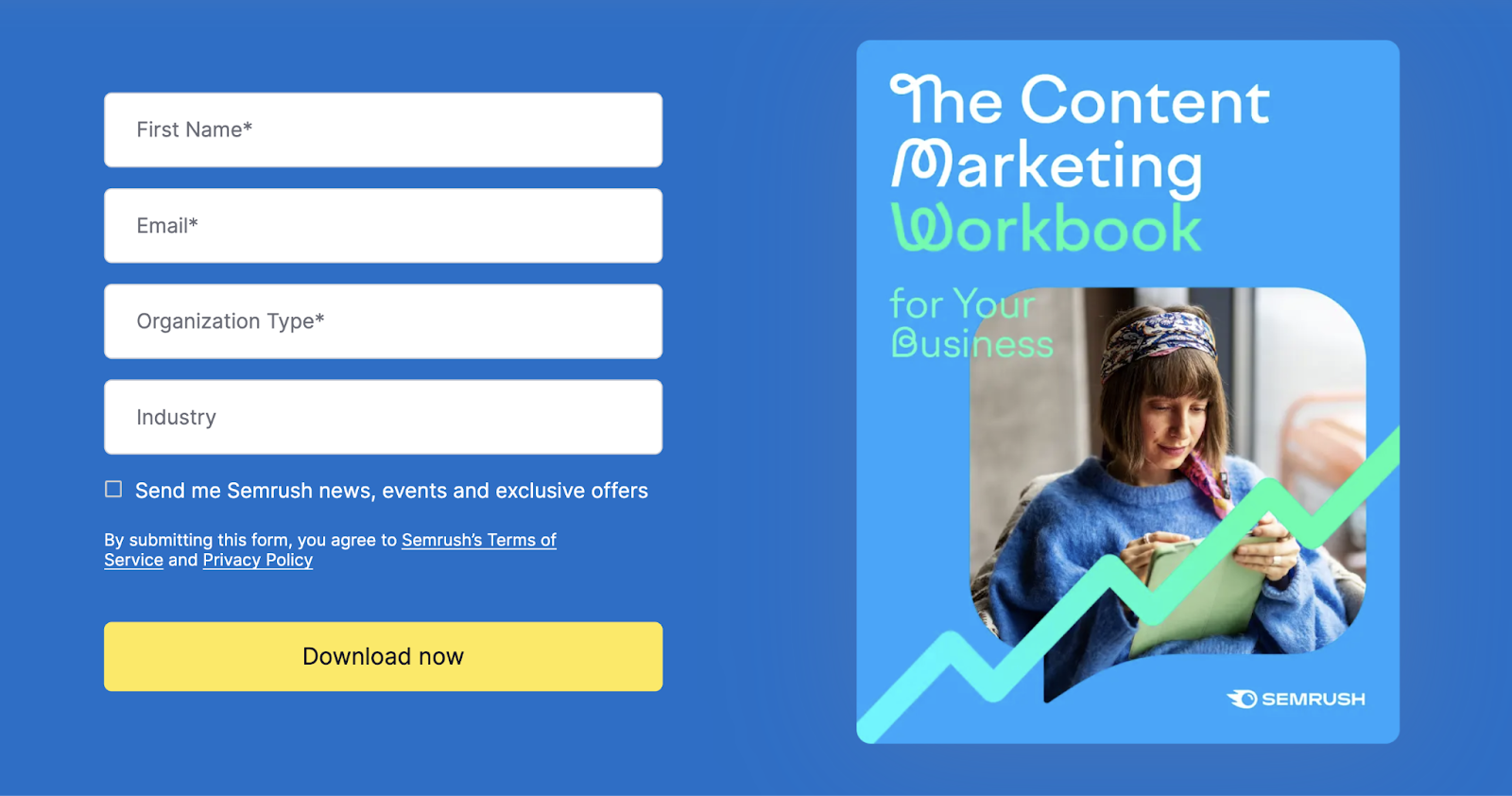
A good ebook should be comprehensive and demonstrate authority, which takes time and expertise. So, consider compiling content from your website to repurpose into an ebook.
Alternatively, you can repurpose an existing ebook into several articles or even videos.
7. Case Studies
Case studies are real-life stories showing how your business has solved client or customer problems.
For example, here’s a snapshot from our Success Stories section:
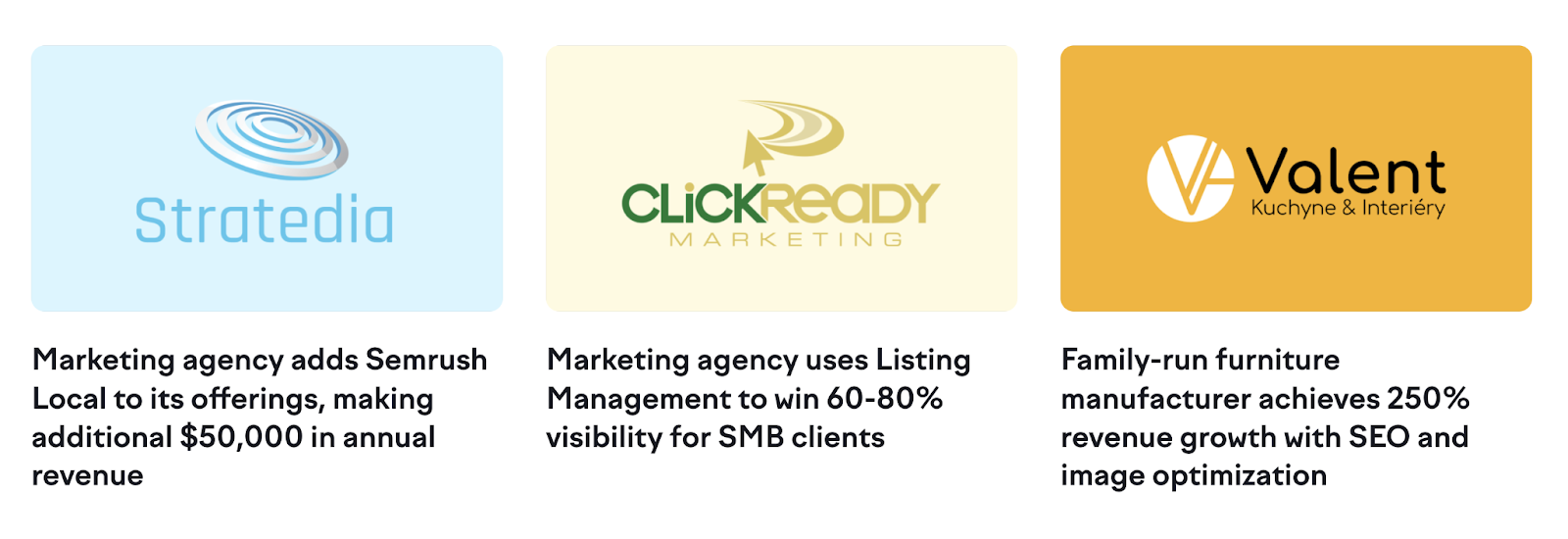
Case studies build trust by demonstrating tangible results.
This is called social proof. And it’s a powerful tool for converting prospects into customers.
Case studies appeal to your audience’s emotions through engaging storytelling and relatable customer experiences.
To create quality case studies you can publish on your website, work with satisfied customers who are willing to share their experiences.
8. Memes
Memes are images, videos, or text that convey humor on culturally relevant events or ideas.
Like this:

They’ve emerged as a highly effective form of content for marketing because they’re simple, relatable, and easy to share.
They’re also great for developing brand personality and awareness. Which can help you better connect to audiences and humanize your business.
And you can use them in written content on your website or on social media.
If memes align with your brand voice and aesthetic, incorporate them into your content marketing efforts.
Just make sure they hit the right notes at the right time. Because nothing falls flat like an irrelevant or unfunny meme.
9. User-Generated Content
User-generated content (UGC) is any type of content created and shared by customers or fans. And then published or shared by you.
It can be incredibly effective in driving brand awareness. And boosting conversions given it’s authentic social proof that reflects the thoughts and experiences of real customers and fans.
For example, here’s a post from a Semrush user that was reposted on our main account:
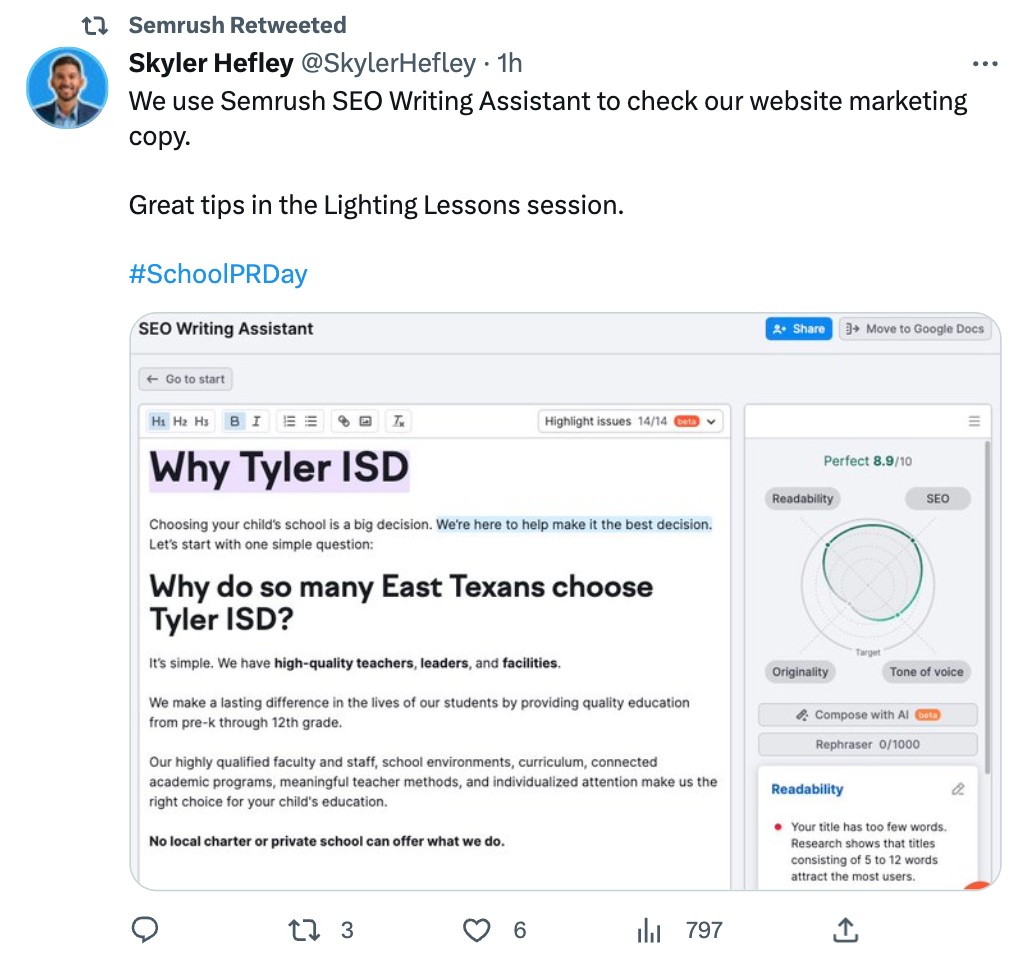
Common forms of user-generated content include:
- Blog post comments
- Product photos
- Forum discussions
- Social media posts
- Unboxing videos
Because UGC influences potential customers’ buying decisions, take advantage of that and guide it as much as you can. By encouraging customers to create and share content related to your business.
For example, create branded hashtags and encourage your customers to use them on social media. And repost their UGC on your channels with a shoutout to the original user.
When used properly, UGC can be one of the most important types of content marketing.
10. Newsletters
Newsletters are a common form of email marketing. They’re regular messages that follow a particular theme—e.g., content marketing tips.
Here’s an example of a Semrush newsletter:
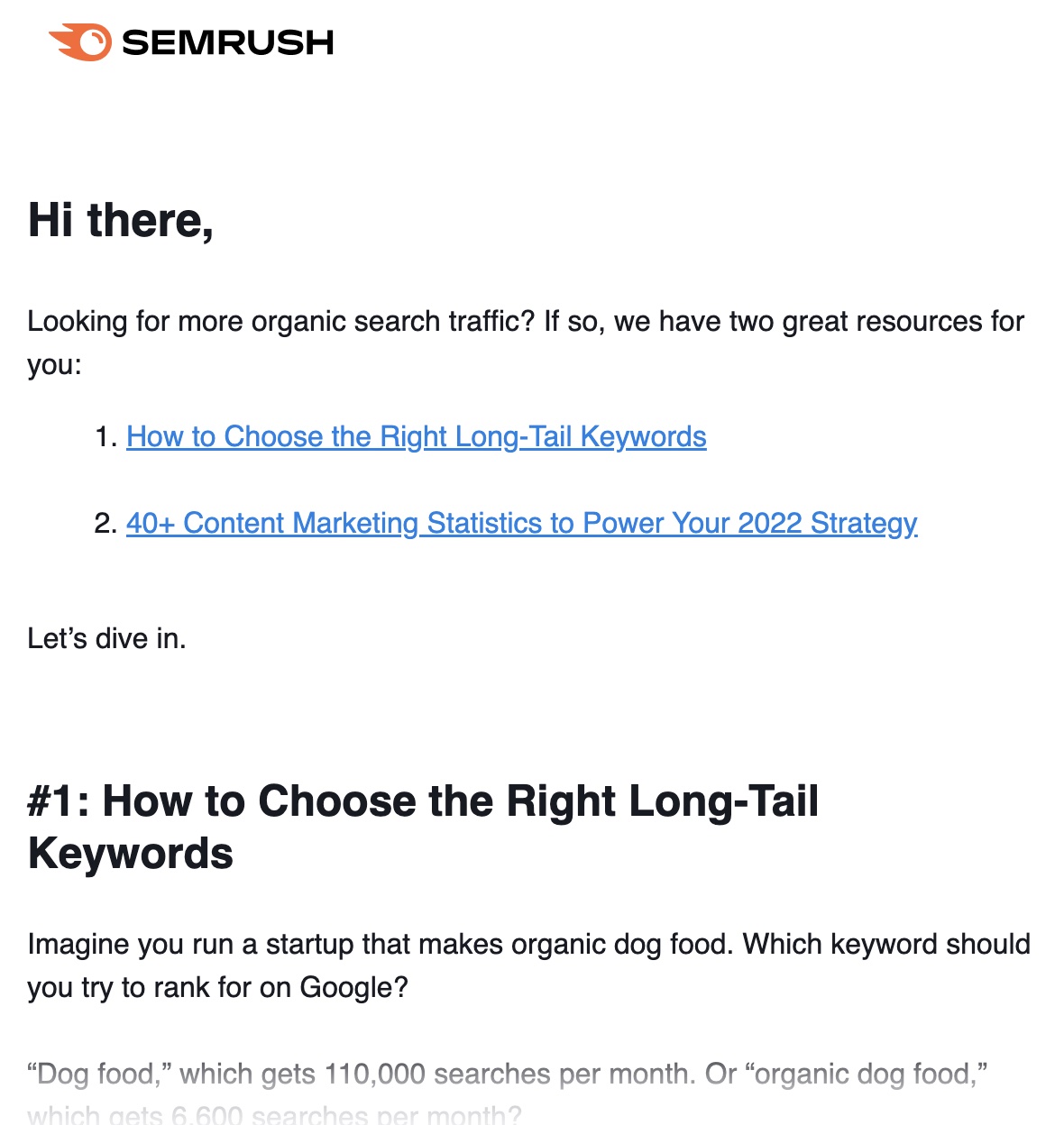
Newsletters enable direct communication between you and the customers and prospects that want to hear from you. (Otherwise, they wouldn’t have subscribed to your newsletter.)
This helps you maintain relationships with subscribers. Which could make them more likely to become paying customers.
You can help usher them toward making a purchase by including calls to action (CTAs) that drive to a sign-up or valuable content.
You can even leverage ads in your newsletters to increase revenue.
And as with most of the other forms of content marketing, you can repurpose blog content into newsletter content (and vice versa).
Then, monitor open rates and engagement to see how your newsletters are performing. And adjust your strategy as you determine what your subscribers want to see.
11. Free Tools
Free tools include checklists, templates, calculators, and anything else you let visitors use without charging them.
These tools can drive traffic and foster trust and loyalty in your business. Because they bring immediate value to your users.
They can even attract valuable backlinks (links from other sites to your site that can benefit your SEO).
Plus, tools demonstrate your business’s expertise and authority by offering practical solutions to customer problems.
For example, Semrush offers a free title generator tool:
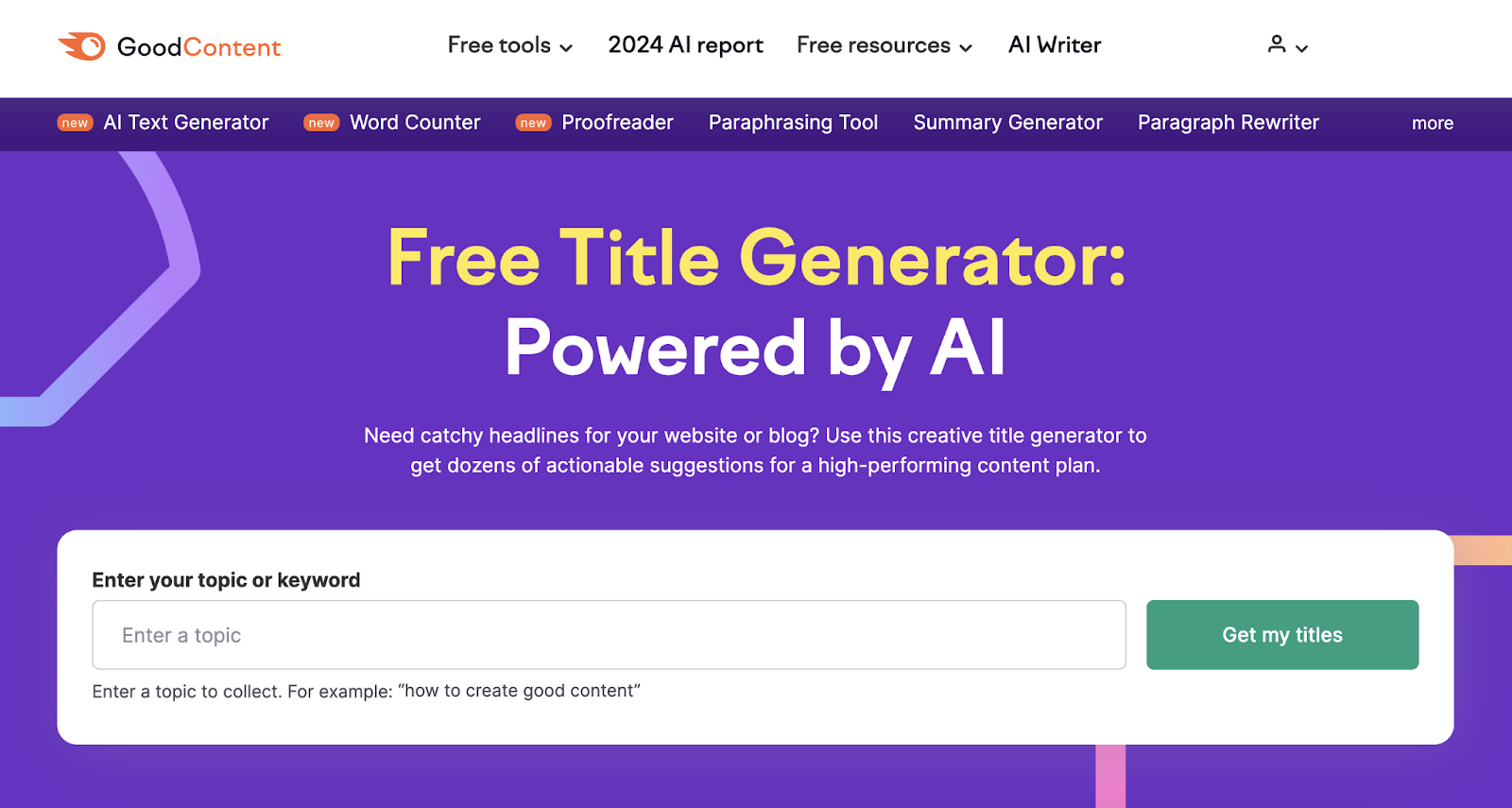
Use free tools for lead generation as you would with ebooks. Or as shareable content for social media.
You can couple free tools and templates with blog posts. Or make them standalone pages.
Just make sure you’re providing something of value to your users. And that you focus on areas in which you have expertise.
12. Courses
Courses are a type of content marketing that offers in-depth learning experiences. And teaches users valuable skills.
For example, the Semrush Academy offers various marketing courses:
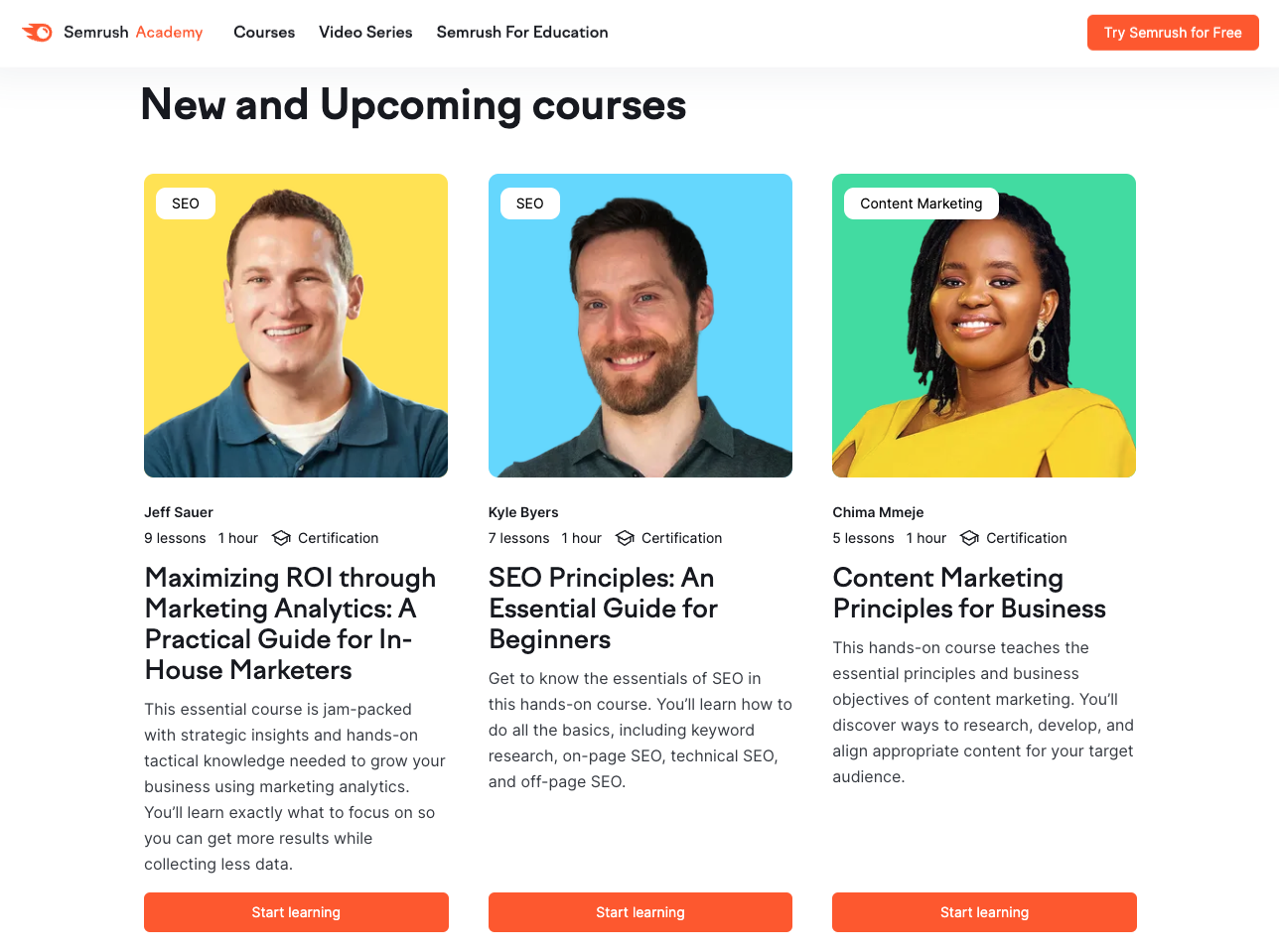
These types of courses can build trust, credibility, and loyalty for your business. And also demonstrate your expertise and authority in a given topic.
Users who are satisfied with your course might be more likely to spread the word. Maybe even on social media or with a backlink.
This promotes your brand and helps you reach a broader audience.
Courses can even serve as lead generators or revenue generators.
13. White Papers
White papers are long-form documents that educate readers about a particular issue, solution, or technology.
They allow you to explore complex topics in depth. And provide facts and figures that stakeholders need to make key decisions.
So, they’re commonly used in business-to-business (B2B) content marketing.
For example, IT company N-able published a whitepaper about ransomware missteps:
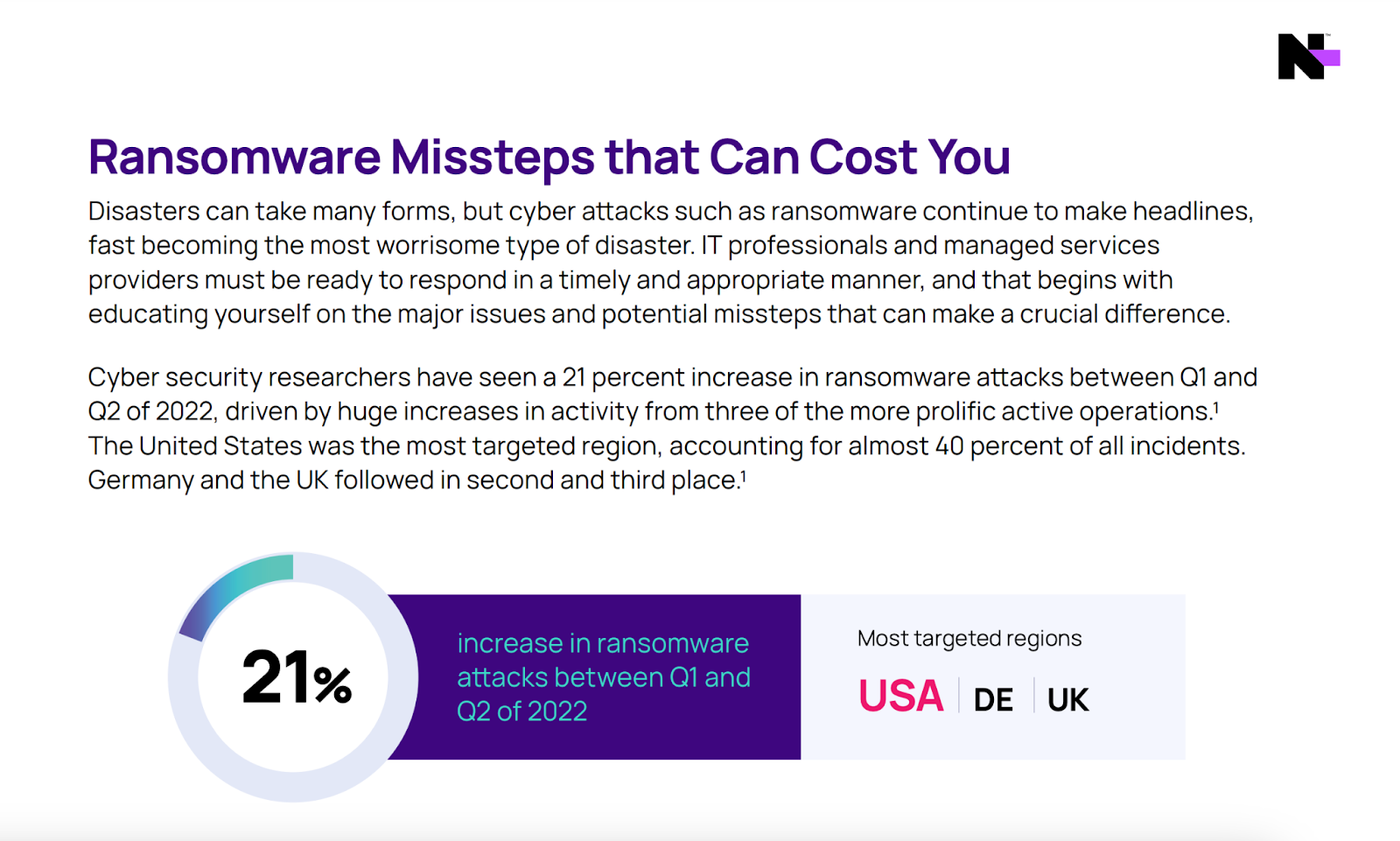
This PDF helps companies understand—and protect themselves against—cyber attacks. And guides them toward relevant services that N-able offers.
14. Testimonials and Reviews
Testimonials and reviews are great for providing social proof.
Testimonials are usually best for B2B or software-as-a-service (SaaS) content marketing. Because they tend to be more formal and in depth.
The idea is that you ask your happy clients to provide a positive statement about your product, service, and/or business. And then publish it on your website.
Like this:
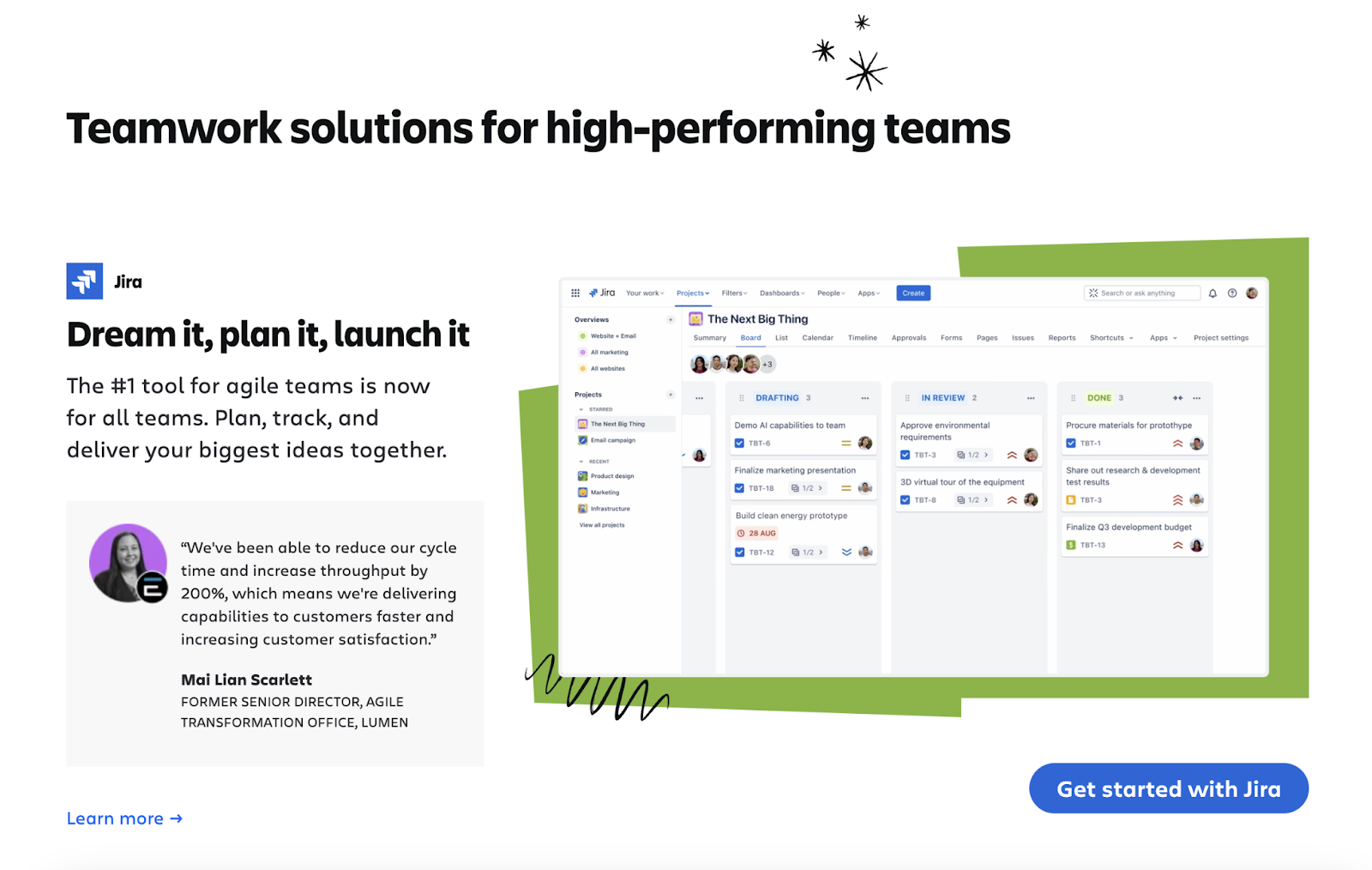
Reviews are generally best for business-to-consumer (B2C) content marketing. Because they’re less formal and easier for users to submit.
To encourage reviews, you can email customers who’ve recently purchased from you. And ask them to leave a comment (and a star rating) on your preferred platform.
If you run an ecommerce site, you might publish reviews on your product pages.
Like Amazon does:
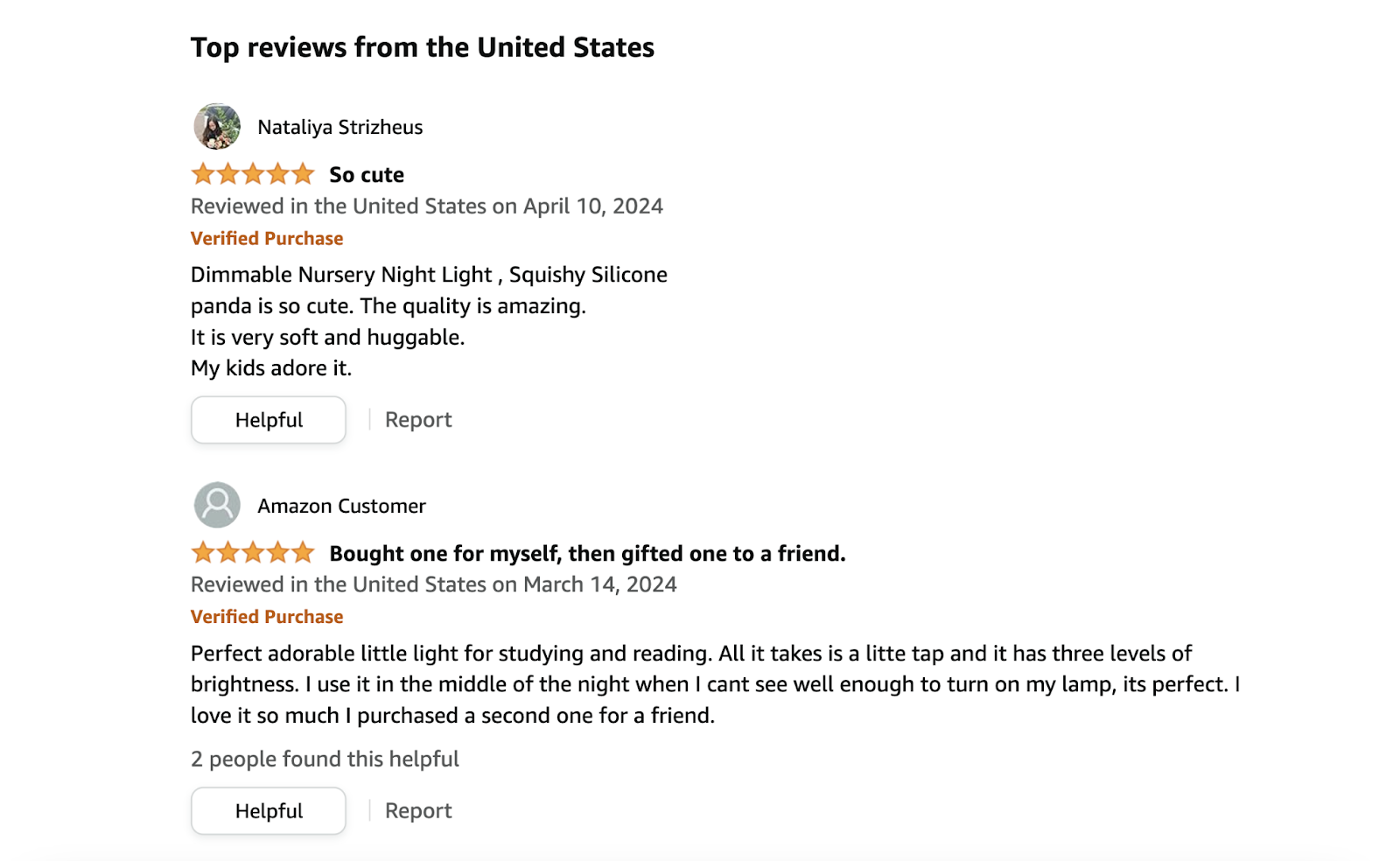
But it’s also helpful to get reviews on third-party platforms—whichever ones your audience is most likely to use and trust.
If you run a local business, try to get Google reviews. The higher the quantity and quality you have, the more likely you are to rank prominently in map results.
Like this:
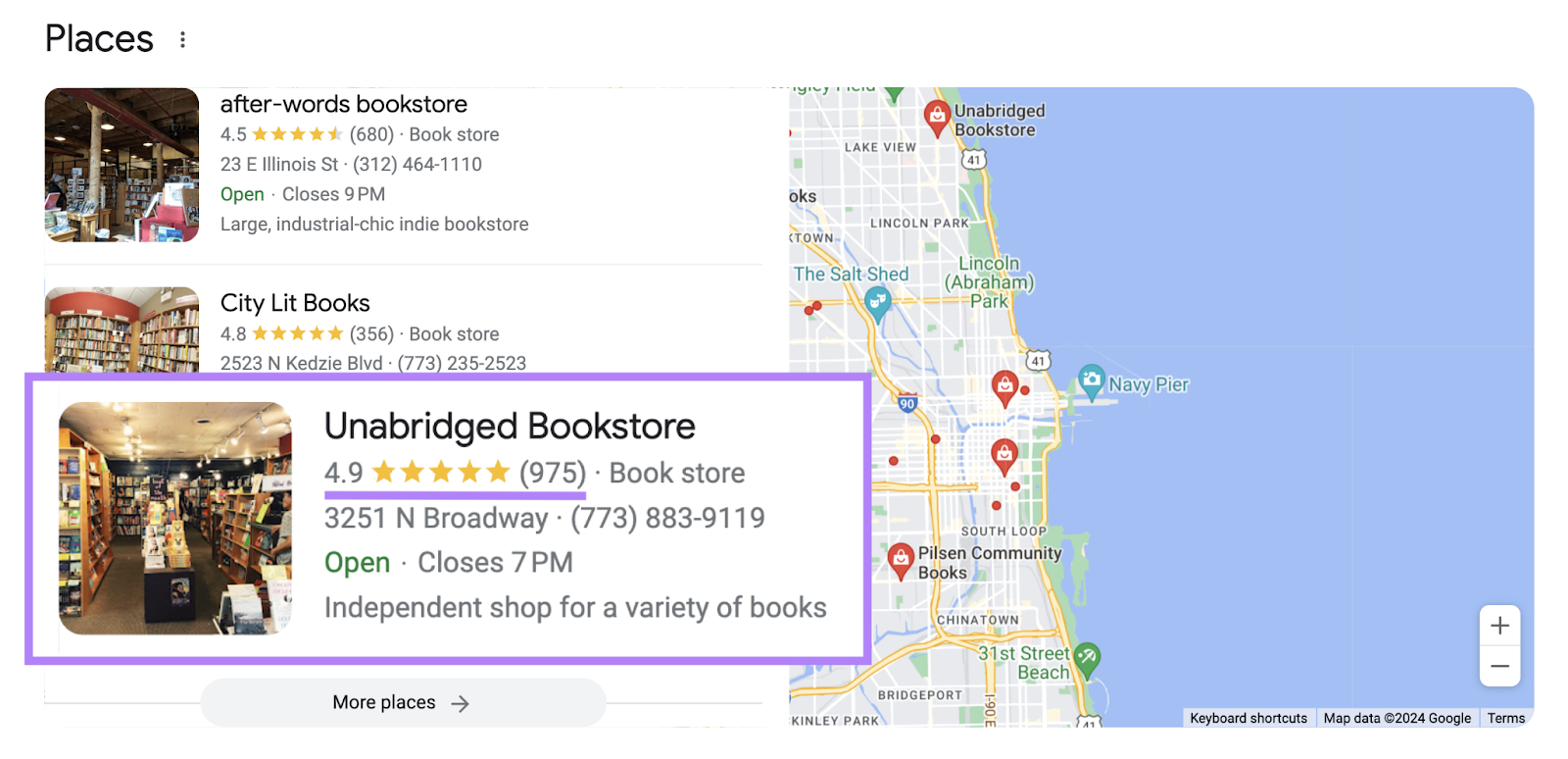
Consider embedding third-party reviews or ratings on your website. That way, your visitors may be more likely to convert.
15. Influencer Marketing Content
Influencer marketing is when you incentivise a content creator (e.g., a blogger or Instagram influencer) to promote your brand to their audience through their chosen medium.
Many people value their favorite creators’ opinions. So, this content marketing method is a great way to expand your reach and build trust with target audiences.
For example, cat owner Ellen Brockbank (@ellenbrockygirl) collaborated with Purina. And endorsed their pet food to her audience of over 133K followers with the Instagram post below.
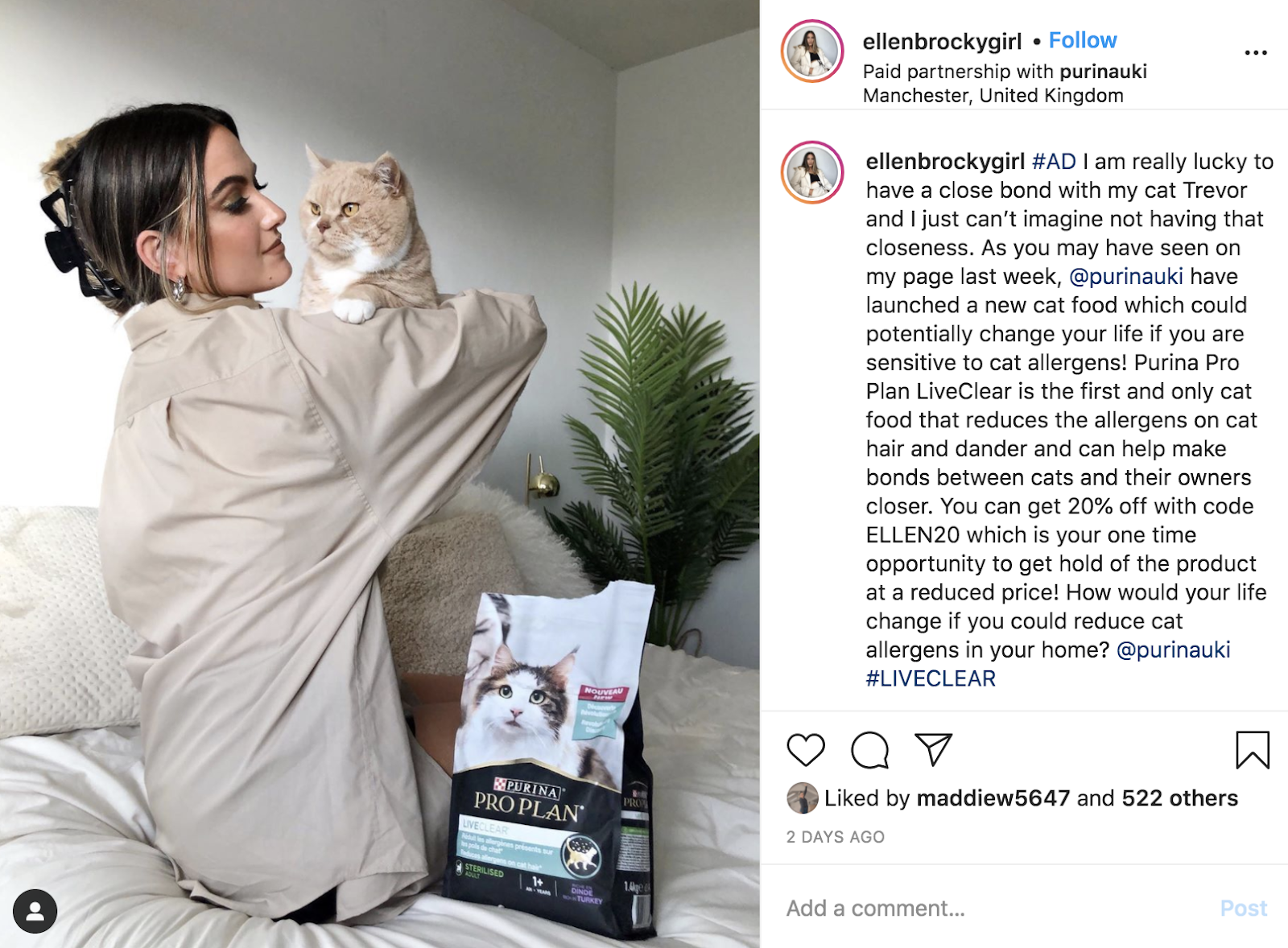
For help finding the right influencers, use the Influencer Analytics app.
It lets you search for social creators based on topics, subscriber count, country, and more.
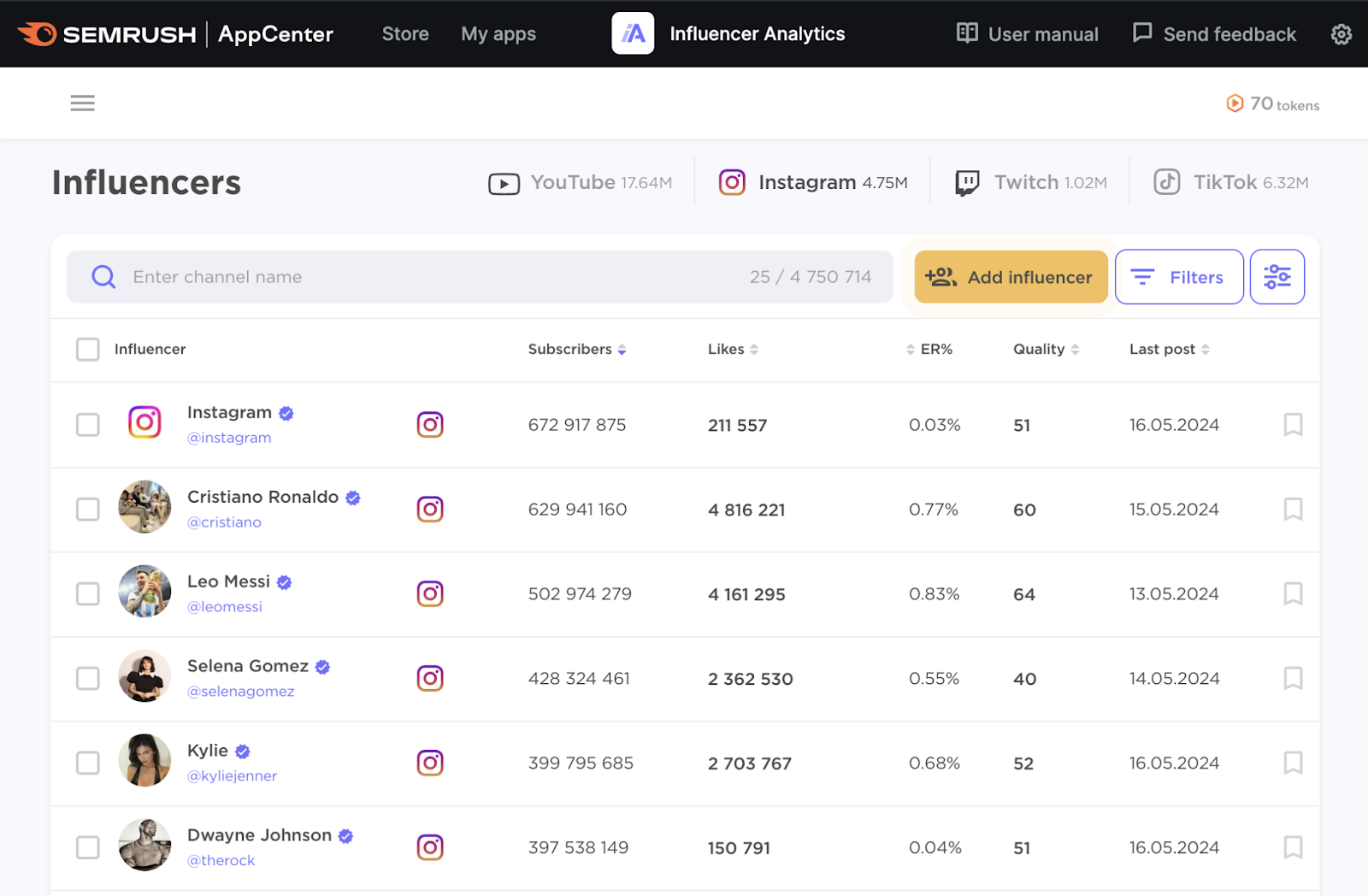
You can then use the app to manage campaigns with your chosen influencers.
16. Webinars
Webinars are online seminars. They provide a great opportunity for you to share your company’s expertise and generate leads.
Generally, the host live-streams a presentation on a particular topic (but they can be pre-recorded as well). And virtual attendees have the opportunity to ask questions.
Afterward, you can make the recorded webinar available for others to watch.
For example, Semrush hosts various kinds of marketing webinars.
Users can register for upcoming events. Or watch previous webinars on demand.
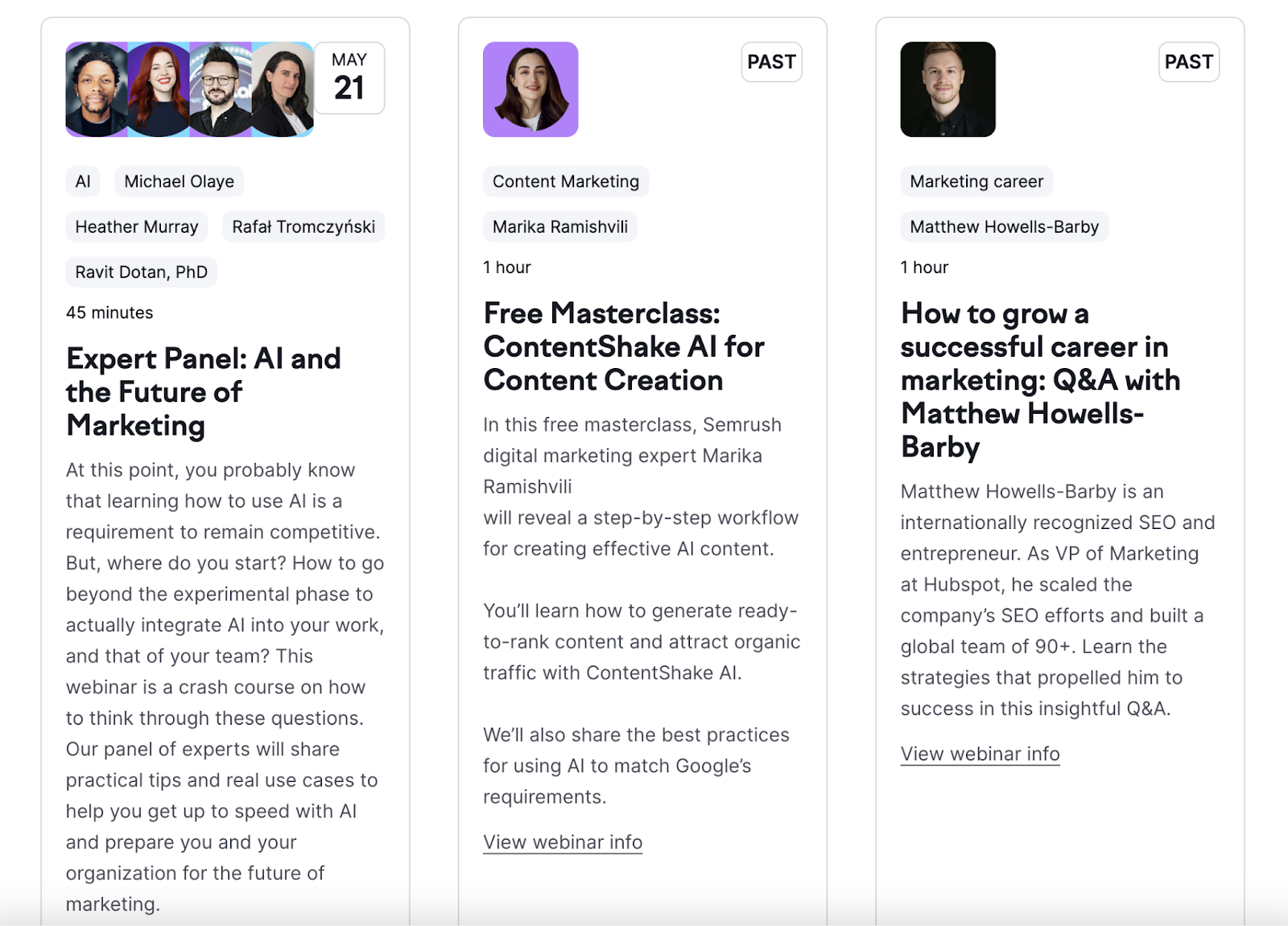
17. Research Reports
Research reports share findings from original research you conducted. Often to answer a question (or questions) your audience has about a particular topic.
This is one of the best content marketing methods if you want to generate backlinks. Because writers might use your report as a source.
For example, Semrush’s Ranking Factors study answers one of the biggest questions in SEO: Which factors have the biggest impact on SEO performance?

Our findings are cited on dozens of websites, according to the Backlink Analytics tool:
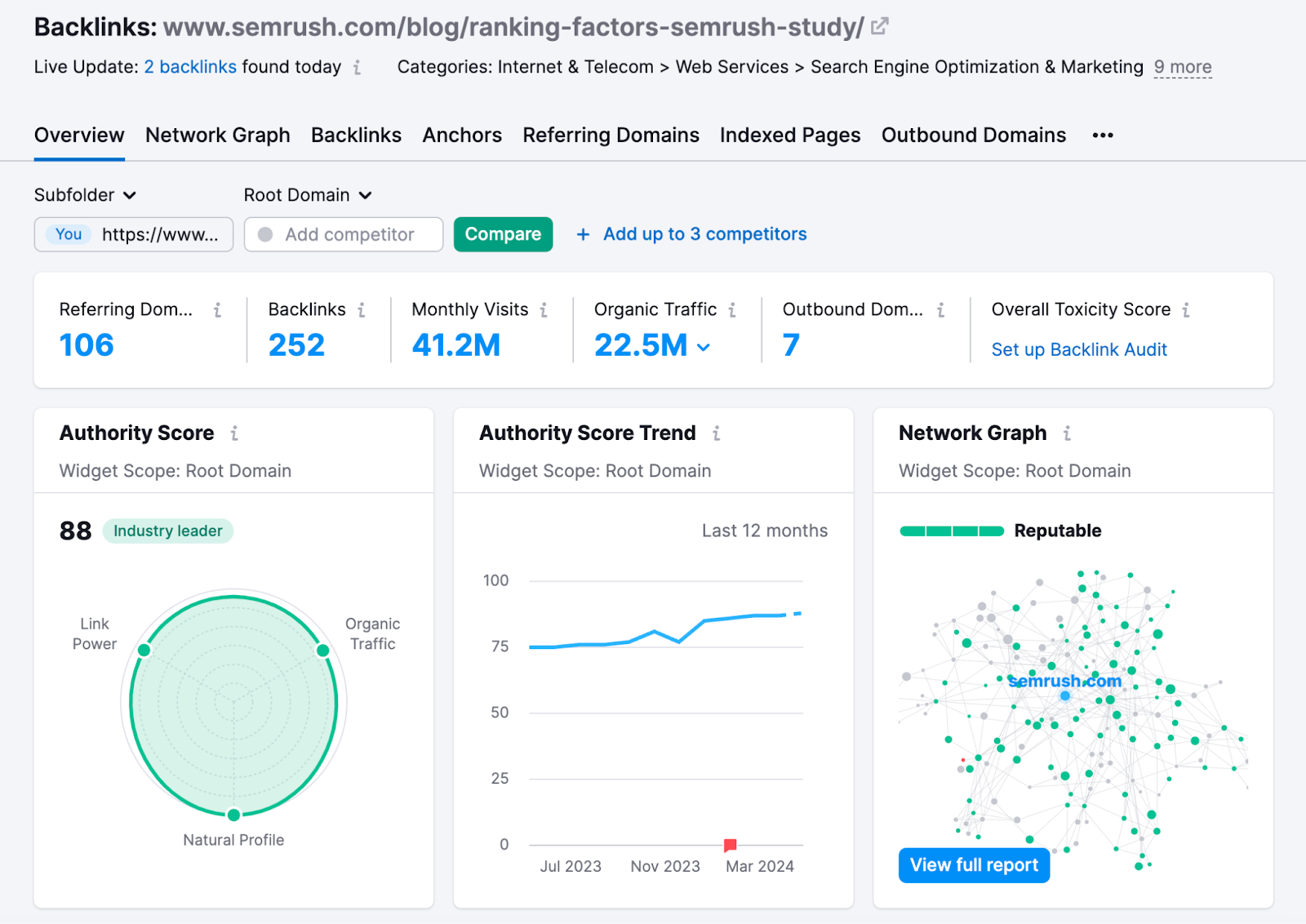
Find Your Next Content Marketing Idea
When you’re trying new types of content marketing, coming up with content ideas can be a challenge.
To save time and effort, use the Topic Research tool.
It identifies popular and trending subtopics in your niche. And helps you kick-start the research process.
